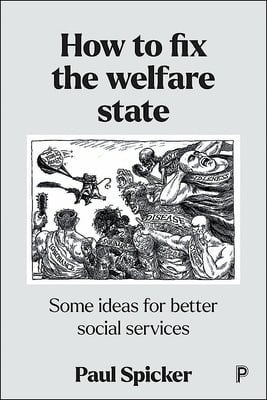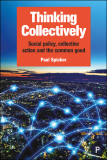An article about behavioural genetics has attracted a certain amount of attention from people who believe this sort of thing. The article, by Paige Harden, is trying to rehabilitate this research, which has an appalling record. The study has been tainted by fabrication and fraud. And, of course by mass murder. (There’s a good history in Carlson, 2001, The Unfit.)
The search for evidence that genes determine behaviour has lasted about 150 years, and still has a long way to go. No-one has been able to establish any real proof that any of our behaviour is genetically determined. However, that last point is disputed by the keepers of the faith. Harden writes:
“A meta-analysis of results from 50 years of twin studies … concluded in 2015 that genes do, in fact, make a difference for these types of social and behavioural outcomes – for people’s cognitive ability, personality, sexual behaviour, educational attainment and income. In fact, this finding is so consistent that it’s long been enshrined as the ‘first law of behavioural genetics’: everything is heritable. That is, variation in every aspect of human psychology and behaviour, and variation in every social outcome that’s influenced by one’s behaviour, is influenced by the genetic differences among us. Despite making different assumptions from twin studies, GWAS [genome-wide association study] results converge on the same answer: which genes you happen to inherit from your parents makes a difference for socially valued life outcomes, such as how far you go in school.”
Let’s take this apart. The first thing to note is the claim that genes ‘make a difference’. That is plausible enough, but it slides into a different argument as the article goes on: that “genes have causal power for people’s lives.” That’s rather more than making a difference. In the study she cites, the authors claim to demonstrate that genetics account for up to 13% of the variance in educational attainment. Put that another way: at least 87% of the variance is not associated with the genomics.
The central problem with the claim that this has ‘causal power’ is that genes don’t actually determine development; they only establish a pattern. The article that the author cites on the ‘laws’ of behavioural genetics comments: “ Development is fundamentally nonlinear, interactive, and difficult to control experimentally.” Just so – but it’s development that really matters. Take, for example, the case of height. That, according to Harden, is down to “the environmental and genetic accidents of one’s birth.” Well, not quite. Height is not set at birth. It’s the product of a phenotype – the cumulative development of a human body, conditioned by its genome, in its interaction with the environment. There are exceptions, at the extremes – but they are exceptions. We know that people have been getting taller in every generation; that would not be possible if height were fixed by the genes. We also know that people who are not well fed are liable to be stunted; that would be impossible, too. Height is influenced by genes but is not determined by them. And we should expect nothing more than that to be true of any developmental factor – such as weight, language development, sporting prowess or academic attainment.
The second problem lies in the idea of ‘heritability’. In animal breeding, heritability is generally put down to genes, because the main differences between animals that matter to breeders are probably those conditioned at birth. We don’t breed humans for their physical attributes, and there are a few other differences. Human behaviour isn’t hard-wired – humans have fewer genes than most complex animals, and we should expect (and can observe) fewer inborn, instinctive behaviours. The relative lack of fixed, instinctive behaviour is compensated for by a different mechanism: socialisation, mainly in families. Families share a great deal, including a more or less common environment, language, cultural practice, leisure activities and diet. Estimates for the heritability of obesity vary between 40% and 70%. That does not mean obesity is genetically caused, only that it runs in families. We cannot be certain for any individual whether their obesity is generated by a genetic blueprint, but there is a clue: obesity has been rising rapidly. As the gene pool changes only very slowly over time, we can take it that the change is social.
Third, there is the reliance on twin studies. For more than 50 years, twin studies have been an unfailing source of bad science. The central assumption behind twin studies is that twins who are identical (monozygotic, or MZ) will manifest the same behaviours on that account; twins who are not identical will share 50% of genes, making them more like each other than ordinary siblings would be. There are several problems with this.
- Any similarities within families may well reflect similar environmental factors. That point is acknowledged by Harden. Identical twins generally have social environments which are very similar indeed, and certainly more similar than fraternal twins. That’s why past studies tried to concentrate on identical twins reared apart – the problem being that (a) not enough twins are reared apart to make for a valid study, and (b) that even when twins are reared apart, social services agencies try to match their environments to the greatest possible extent.
- Twins are not representative of general experience. All twins have a different experience from other babies, and an experience which is similar to each other. They are typically born prematurely; they have to share the divided attention of parents, in a different way to siblings; and because they have been born at the same time their environment and experience will be more alike than other siblings.
- There is the common assumption of genetic similarity. In most studies that is based not on hard genetic evidence but (believe it or not) on the impressions of the parent. It should be no surprise that parents who think their children are more alike treat them as more alike.
- Nearly all studies discard information about twins where one is disabled – a not uncommon issue – even though that disability means that children with the same genes clearly have different experiences.
What, we might reasonably ask, can twin studies prove? The standard scientific approach is not to prove a hypothesis; it is to disprove it. Identical twins cannot show us that something is genetically caused, because of confounding factors that cannot be controlled for. What identical twins might be able to show us are the circumstances which are not genetic in origin, because if MZ twins were to act differently we would know that the difference between them could not be attributed to their genes. There is some presumptive evidence, for what it’s worth, that MZ twins can and do have different sexualities – the same in two thirds of cases, different in one-third. If that happens at all, it isn’t genetically determined – though, being of a sceptical bent, I do wonder about the sampling and the lack of specific genetics which lie behind that finding. I don’t expect behavioural geneticists to do the work to test this properly, because of course they are already convinced that everything is driven by genes. Unfortunately, that presumption undermines the studies they make.
Fourth, there is the use of big data. If we were serious about identifying genetic effects, we should be able to identify behaviours which exist only when a gene or set of genes is present, and which do not exist when those genes are not present. We can do this with current genetic medicine – the same approach which last year saved my life; I know exactly which set of genes has malfunctioned, what it has done and what the best treatment is. The GWAS research referred to might, in principle, be able to show something of the kind about behaviour – but the signs are not good. Take the major study of genes and educational attainment cited above. It processed data for 1.1 million adults and identified 1271 relevant gene clusters, that is ‘genome-wide significant SNPs’ . A previous study, done on 294,000 adults, had found that they were able to explain only 3.2% of the variance. In this study, the authors report that “A joint (multi-phenotype) analysis of educational attainment and three related cognitive phenotypes generates polygenic scores that explain 11–13% of the variance in educational attainment and 7–10% of the variance in cognitive performance.”
Taking that result at face value, what does it tell us? The most striking finding, which I’ve already pointed to, is that genetic analysis does not explain at least 87% of the variance, and in the worst case it did not explain 96%. Genes may have an influence, along with lots of other things, but – if we trust the figures – it’s not a big one.
Now, let’s be a bit rougher on this research. The first objection is straightforward: association is not causation. Even if the association was higher, it wouldn’t actually prove a causal link. There has to be a specific generative mechanism, and that’s never been established.
Second, the stats weren’t developed to deal with numbers this big. People often suppose that associations in bigger data sets are more reliable than associations in smaller ones. That’s not necessarily true; the larger the number, the more systemic imbalances can be amplified.
Third, this is a fishing expedition. Whenever you deal with massive numbers of observations, there are going to be associations arising by chance. The bigger the numbers, the more apparently significant associations there are going to be. The claims in this study might, I think, be compared to the work on astrology, seeking to prove that people born under particular star-signs move into certain occupations. Austin et al report, in the Journal of Clinical Epidemiology, no less (2006 59 pp 964-969) that people born under Gemini and Libra had increased mortality after infarcts treated by aspirin. Make the sample big enough, and you’ll find some pattern. Just don’t try to invest it with meaning.
Last, and not least, these associations might simply mask the real influences. There are lots of other reasons why people might have higher or lower educational attainment – class, poverty, family background, language – and a comparison of educational attainment with selected elements of the genome doesn’t bother controlling for them.
 books. I have just sent the final copy of the first to Policy Press, who will be publishing it early in 2022. It’s called
books. I have just sent the final copy of the first to Policy Press, who will be publishing it early in 2022. It’s called 